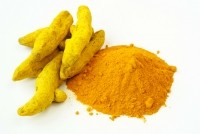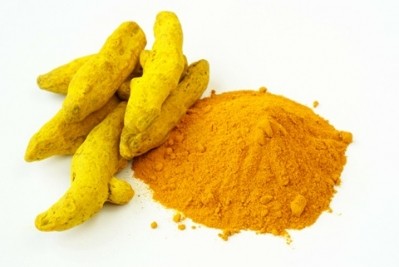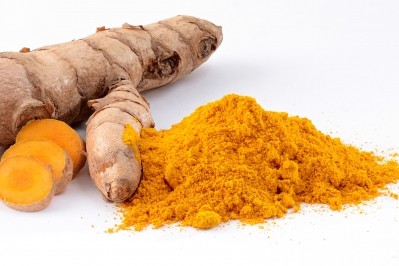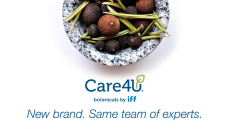Researchers in India use curcumin to create ‘functional ice cream’

Powdered turmeric, a key ingredient in making curry, can be found in spice cabinets across South Asia. Researchers at India’s National Dairy Research pointed that, as people are looking for naturally occurring bioactive components in plants, the bioactives of turmeric is a valuable source of nutrients for functional foods.
“It has [been] used as a remedy since ancient times because of several pharmacological properties,” they wrote. These properties, among other things, include anti-oxidative, anti-inflammatory, and anti-parasitic activities.
Despite soaring sales of curcumin supplements, curcumin’s application as a functional food ingredient hasn’t been widespread—the researchers attribute this to “poor water-solubility, extremely low absorption and bioavailability, and rapid degradation under neutral and alkaline pH conditions.”
Published in the latest edition of Food & Function, their study found that the hydrophobic curcumin can actually be dissolved to add nutrition to functional foods when it has been nanoencapsulated using sodium caseinate. The best part, to the joy of children and adults alike: ice cream was a successful host of the functional ingredient.
Tiny droplets encapsulated by casein
To make the curcumin bioactives dissolve, the researchers turned them into nanoemulsions, which are “transparent heterogeneous mixtures of oil in water and are stabilized by emulsifiers,” they wrote. Imagine nanosized droplets of orbs encapsulated by a membrane.
For this study, the researchers used casein to emulsify and encapsulate the curcumin, this is because, compared to whey protein, casein can form a thicker interfacial layer around the lipid droplets, and because it is easily degraded by the enzymes of a stomach.
Another advantage is that the food industry already widely uses sodium caseinate (NaCas), so the study could simulate a feasible functional food design.
But then there’s the question of shelf-life and stability. “The pharmaceutical and food sectors are focusing great attention on deveping suitable delivery systems for the incorporation of curcumin oil in water emulsions and these need to be stable in food product,” the researchers wrote.
What are nanoemulsions?
"Nanoemulsions are transparent heterogeneous mixtures of oil in water and are stabilized by emulsifiers,” -D.D. Kumar, et al.
Blends well with ice cream
After various tests using different oils to dissolve the curcumin—butter, palm, olive, MCT-60, and sunflower oil—maximum solubility was found in MCT-60, a medium chain triglycerides-60 procured from Kamani Oil Industries in Mumbai, India. The curcumin itself was obtained from Plant Lipids, based in Kerala, India, wheras the Sodium caseinate came from Thomas Baker Chemicals in Mumbai, India.
The team made their ice cream from scratch. Dry ingredients (skim milk powder, stabilizier, emulsifier, and sugar) ere mixed with the liquid ingredients (milk and cream) at 70 to 72°C. Afterwards is the homogenization process around 65°C, when the curcumin nanonemulsion is added. The mixture is then pasteurized at around 85°C, and cooled between 0 to 4°C.
After 24 hours of ageing in freezing temperature, flavour (mango) and color was added, before freezing and packaging it at below freezing temperatures (around -18°C).
Was it good ice cream?
“For the stability, we observed no phase separation after centrifugation,” the researchers wrote. “At physiological pH (7.2 to 7.4) curcumin was unstable and degraded immediately. To challenge the use of a curcumin nanoemulsion in drug delivery in pharmacological therapy, we solubilized curcumin alone or the nanoemulsion (1 mg mL−1) in PBS (pH 7.4) and observed the complete solubilization of the freeze dried curcumin nanoemulsion compared to native curcumin which is less soluble with undissolved flakes”
In other words, the nanoencapsulation of lipophilic curcumin by using the sodium caseinate as an emulsifier was found stable under various processing conditions: Heat, pH, and ionic strength.
“The release kinetics data also suggest that our formulation was stable in simulated gastrointestinal conditions,” the researchers wrote. “Further, ice cream was selected as an ideal food system for the delivery of curcumin nanoemulsion.”
Though further studies are needed in the field to study the functional attributes and use for therapeutic purposes, it’s safe to say curcumin can start becoming a more widespread ingredient for functional foods in the near future.
Source: Food & Function
Published online Jan 2016, doi: 10.1039/c5fo00924c.
Formulation and Characterization of Nanoencapsulated Curcumin using Sodium Caseinate and its Incorporation in Ice cream
By: Kumar, D.D. et al.















